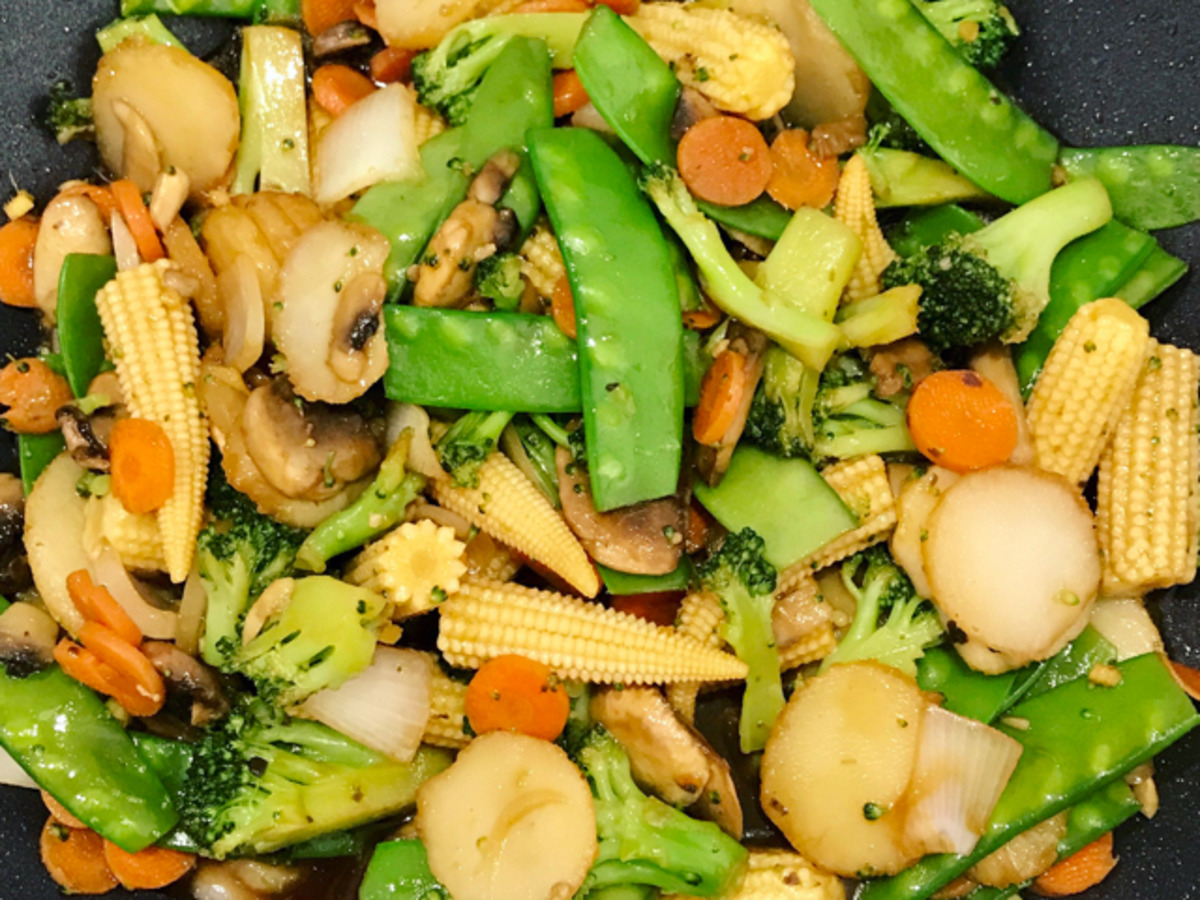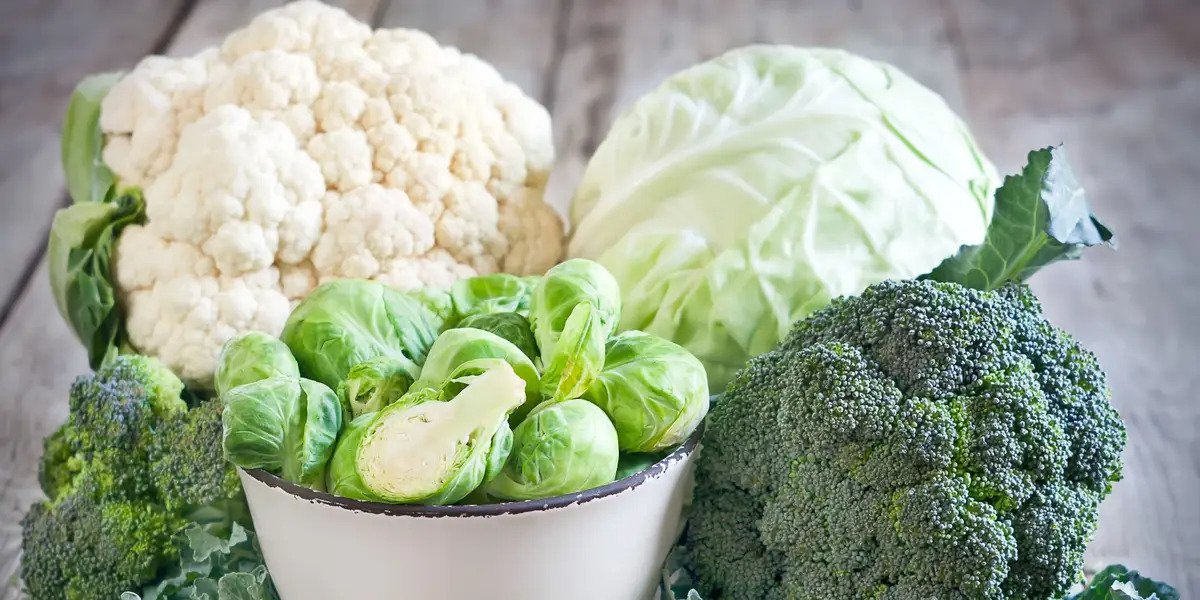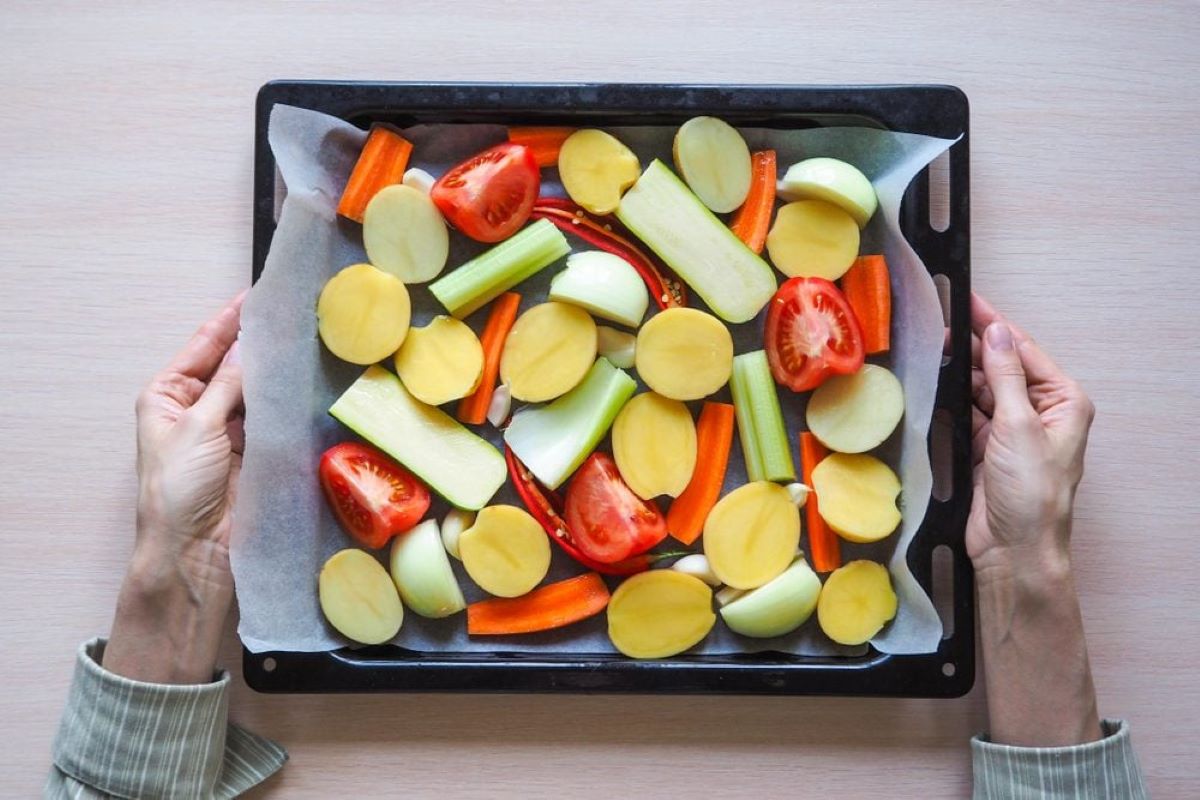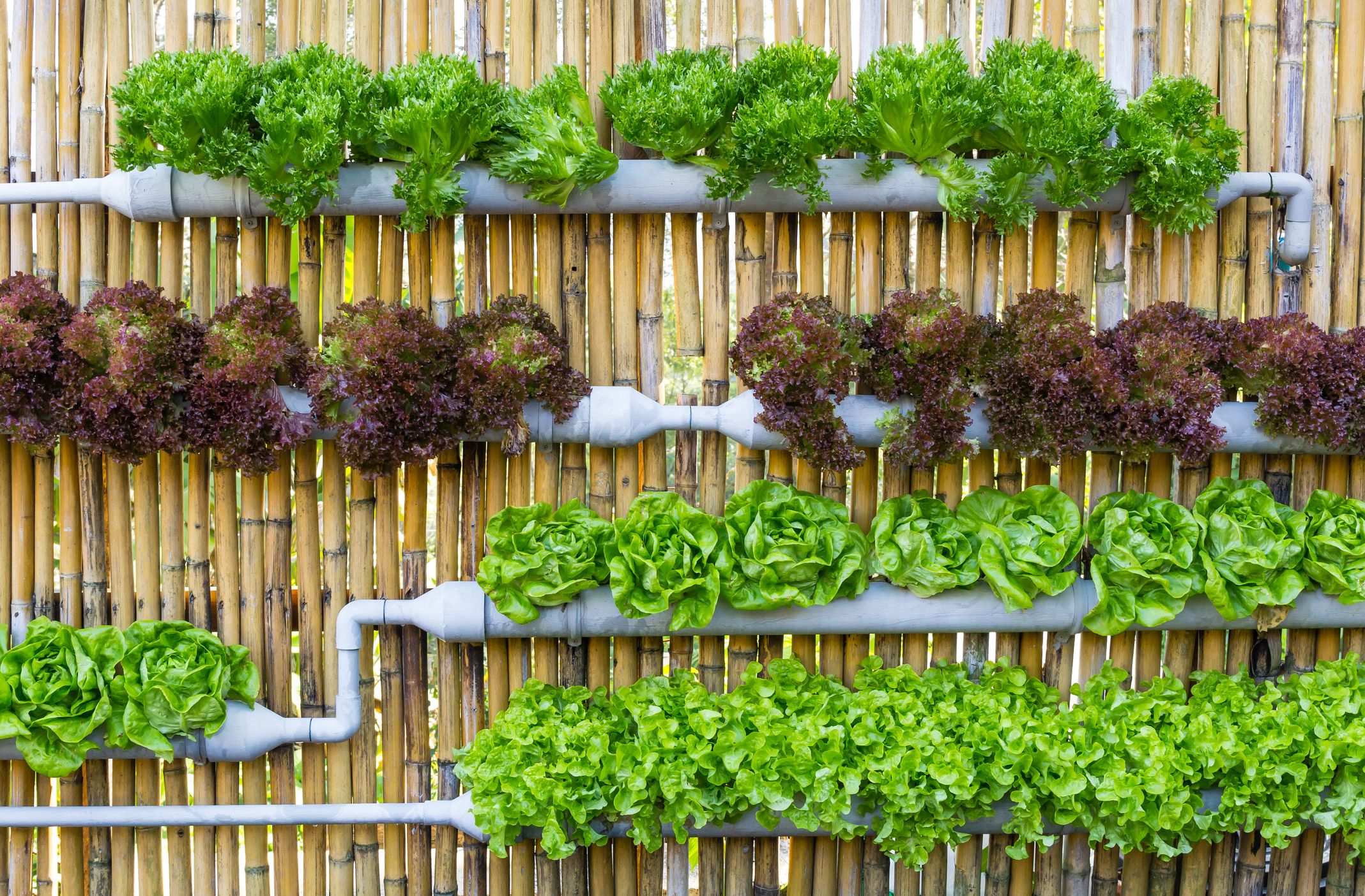Home>Gardening News and Trends>Latest News>How To Make Chinese Vegetables


Latest News
How To Make Chinese Vegetables
Modified: January 22, 2024
Discover the latest news and expert tips on how to make Chinese vegetables at home. Learn traditional recipes and cooking techniques for a delicious and healthy meal.
(Many of the links in this article redirect to a specific reviewed product. Your purchase of these products through affiliate links helps to generate commission for Chicagolandgardening.com, at no extra cost. Learn more)
Table of Contents
Introduction
Chinese cuisine is known for its diverse flavors and vibrant colors, and vegetables play a central role in many traditional Chinese dishes. Whether you’re a fan of stir-fries, soups, or salads, incorporating Chinese vegetables into your meals can add a touch of authenticity and nutritional value. From bok choy to Chinese broccoli, there are numerous types of Chinese vegetables to explore and enjoy.
When it comes to making Chinese vegetables, freshness is key. The vibrant colors and crisp textures of fresh Chinese vegetables can take your dishes to the next level. In this article, we will guide you on how to choose the freshest Chinese vegetables, prepare them for cooking, and highlight various cooking techniques that will bring out their best flavors.
From stir-frying to steaming, braising to making hearty soups, there are numerous cooking techniques that can be employed to showcase the natural flavors and textures of Chinese vegetables. In addition, Chinese vegetable salads and side dishes provide alternative ways to incorporate these nutritious greens into your meals.
This article will walk you through each step of the process, offering tips and tricks along the way to ensure that your Chinese vegetable dishes turn out delicious and visually appealing. So, whether you are looking to impress your friends with a homemade Chinese feast or simply want to add some healthy variety to your weekly menu, read on to discover the secrets of making mouthwatering Chinese vegetables.
Choosing Fresh Chinese Vegetables
When it comes to Chinese cuisine, using fresh ingredients is of utmost importance. Fresh Chinese vegetables not only enhance the flavors of your dishes but also offer a delightful crispness that can elevate your culinary creations. Here are some tips for selecting the freshest Chinese vegetables:
- Look for vibrant colors: Choose Chinese vegetables that have vibrant, rich colors. For example, bok choy should have vibrant green leaves, and Chinese broccoli should have dark green florets.
- Check the texture: The texture of Chinese vegetables is as important as their color. They should feel firm and crisp to the touch, indicating their freshness.
- Inspect the leaves: If you’re buying Chinese leafy greens like bok choy or Chinese spinach, make sure the leaves are free from wilting, browning, or yellowing.
- Smell the aroma: Some Chinese vegetables, like Chinese chives or garlic chives, have a distinct aroma. Give them a sniff to ensure they have a fresh and fragrant smell.
- Avoid bruised or damaged vegetables: Choose Chinese vegetables without bruises, spots, or other signs of damage. This ensures that the vegetables are at their peak freshness.
- Buy in-season vegetables: Chinese vegetables are best when they are in season. They are not only more readily available but also tend to be fresher and more flavorful.
When purchasing Chinese vegetables, it’s a good idea to visit an Asian grocery store or a local farmer’s market. These places often offer a wide variety of fresh Chinese vegetables, ensuring a higher chance of finding the best quality produce.
By taking the time to select fresh Chinese vegetables, you can ensure that the natural flavors and textures shine through in your cooking. So, keep these tips in mind the next time you go shopping for Chinese vegetables, and get ready to create delectable dishes that will impress your taste buds.
Preparing Chinese Vegetables
Once you’ve brought home your fresh Chinese vegetables, it’s time to prepare them for cooking. Properly preparing Chinese vegetables ensures that they are ready to showcase their flavors and textures in your dishes. Here are some essential steps for preparing Chinese vegetables:
- Wash the vegetables: Start by giving your Chinese vegetables a thorough rinse under cold water to remove any dirt or impurities. Pay close attention to the leaves and stems, gently rubbing them with your fingers if necessary.
- Trim and discard any damaged parts: Inspect the Chinese vegetables for any bruised or wilted portions. Using a sharp knife, trim off the damaged parts and discard them.
- Cut or slice according to the recipe: Depending on the dish you are preparing, you may need to cut or slice the Chinese vegetables into specific shapes and sizes. Follow the instructions in your recipe to achieve the desired results.
- Separate the stems and leaves: Some Chinese vegetables, like bok choy or Chinese cabbage, have stems and leaves that require different cooking times. If needed, separate the stems from the leaves to ensure even cooking.
- Pat dry: After washing and cutting the Chinese vegetables, use a clean kitchen towel or paper towels to gently pat them dry. Excess moisture can make stir-frying or steaming more challenging.
It’s important to note that not all Chinese vegetables require the same preparation steps. For example, leafy greens like Shanghai bok choy or Chinese spinach may only need a quick rinse and trim, while heartier vegetables like gai lan (Chinese broccoli) may require blanching before further cooking.
Remember to follow your recipe’s instructions for preparing the specific Chinese vegetable you are using. Additionally, keep in mind that Chinese vegetables are often used in their entirety, including the stems and leaves, to minimize waste and make the most of their flavors and textures.
By properly preparing your Chinese vegetables, you’ll be ready to dive into a world of delicious and authentic Chinese cooking. So, roll up your sleeves, grab your knife, and get ready to transform these fresh greens into delectable dishes that will impress your family and friends.
Common Chinese Vegetable Cooking Techniques
Chinese cuisine boasts a wide array of cooking techniques that bring out the best flavors and textures of vegetables. Whether you prefer stir-frying, steaming, braising, or making soups, there’s a Chinese cooking technique suitable for every taste. Here are some common techniques used to cook Chinese vegetables:
- Stir-Frying: Stir-frying is a popular and versatile cooking method in Chinese cuisine. It involves quickly cooking vegetables in a hot wok or skillet with oil and various seasonings. This technique allows the vegetables to retain their crispness, vibrant colors, and natural flavors.
- Steaming: Steaming is a gentle cooking technique that helps preserve the delicate flavors and textures of Chinese vegetables. Simply place the vegetables in a steamer basket or on a heatproof plate, and steam them over boiling water until tender. Steamed vegetables are delicious on their own or can be seasoned with light sauces or dressings.
- Braising: Braising involves slowly cooking Chinese vegetables in a flavorful liquid, such as broth or soy sauce, until they become tender and absorb the rich flavors of the sauce. This technique is commonly used for heartier greens like bok choy or gai lan, resulting in tender and savory dishes.
- Blanching: Blanching is a quick boiling technique that helps tenderize Chinese vegetables and preserve their vibrant colors. It involves briefly immersing the vegetables in boiling water, followed by immediate transfer to an ice bath to stop the cooking process. Blanching is often used as a pre-cooking step before stir-frying or adding the vegetables to soups.
- Soups: Chinese vegetable soups are nutritious and comforting. They typically involve simmering a variety of vegetables, along with other ingredients like broth, meats, or tofu, to create flavorful and nourishing soups. Whether it’s a clear broth or a hearty soup, Chinese vegetable soups are a delightful way to enjoy the flavors and health benefits of these greens.
Each cooking technique offers a unique way to showcase the flavors and textures of Chinese vegetables. The choice of technique often depends on the specific dish or personal preference. So, don’t be afraid to experiment and discover your favorite cooking techniques for Chinese vegetables.
Now that you’re familiar with the common Chinese cooking techniques, it’s time to dive into some specific recipes and learn how to prepare delectable stir-fried, steamed, braised, and soups with Chinese vegetables. Get ready to embark on a culinary adventure filled with vibrant flavors and nutritious greens.
Stir-Fried Chinese Vegetables
Stir-frying is one of the most beloved and versatile cooking techniques in Chinese cuisine, and it’s an excellent way to showcase the flavors, textures, and vibrant colors of Chinese vegetables. Stir-frying involves quickly cooking small pieces of vegetables in a hot wok or skillet with oil, along with various seasonings and sauces. Here’s how you can make delicious stir-fried Chinese vegetables:
- Prepare your ingredients: Start by washing, trimming, and cutting your Chinese vegetables into bite-sized pieces. Remember to keep the stems and leaves separate if needed. Prepare any other ingredients such as garlic, ginger, or protein (optional) that you plan to include in your stir-fry.
- Preheat your wok or skillet: Heat your wok or skillet over high heat until it becomes smoking hot. This step is crucial for achieving the characteristic smoky flavor and sear of a good stir-fry.
- Add oil and aromatics: Drizzle some cooking oil, such as vegetable or peanut oil, into the hot wok or skillet. Then, add minced garlic and grated ginger, and stir-fry for a few seconds until fragrant.
- Add the vegetables: Add the tougher vegetables or stems first, stirring constantly to ensure even cooking. After a minute or two, add the softer leaves or greens, giving them a quick toss until wilted.
- Season and sauce: Season your stir-fried vegetables with salt, pepper, or other desired spices. You can also add sauces like soy sauce, oyster sauce, or hoisin sauce for extra flavor. Toss the vegetables until well-coated with the seasonings and sauces.
- Final touches: Once the vegetables are cooked to your desired tenderness (they should still retain some crunch), remove the wok or skillet from the heat. You can garnish your stir-fried Chinese vegetables with sesame oil, toasted sesame seeds, or chopped green onions for added aroma and texture.
Stir-fried Chinese vegetables can be enjoyed on their own as a flavorful and nutritious side dish. They also pair well with rice, noodles, or as part of a larger Chinese meal. Feel free to experiment with different combinations of vegetables and sauces to create your own unique stir-fry recipes.
Keep in mind that stir-frying requires quick cooking at high heat, so it’s essential to have all your ingredients prepped and ready before you start. This way, you can achieve the perfect balance of crispness, vibrant colors, and bold flavors in your stir-fried Chinese vegetables.
Now that you have the basics of stir-frying Chinese vegetables, it’s time to put your skills to the test. Explore various combinations of vegetables and flavors, and enjoy the delightful experience of creating delicious stir-fried dishes that highlight the freshness and beauty of Chinese vegetables.
Steamed Chinese Vegetables
Steaming is a gentle and healthy cooking technique that allows the natural flavors and textures of Chinese vegetables to shine through. Steamed Chinese vegetables retain their vibrant colors, crispness, and nutritional value, making them a wonderful addition to any meal. Here’s how you can steam Chinese vegetables to perfection:
- Prepare your vegetables: Start by washing the Chinese vegetables thoroughly under cold water. Trim or cut them into manageable pieces, ensuring they will fit in your steamer basket or on a heatproof plate.
- Set up the steaming apparatus: Fill a large pot or wok with a few inches of water, making sure the water level is below the steamer basket or plate. Place the steamer rack or basket inside the pot. If you don’t have a steamer, you can use a heatproof plate and a heatproof bowl to create a makeshift steamer.
- Start the steaming process: Bring the water to a boil over high heat. Once the water is boiling, carefully place the prepared Chinese vegetables onto the steamer rack or plate. Cover the pot or wok with a lid, ensuring a tight seal to trap the steam.
- Steam the vegetables: Steam the Chinese vegetables for about 3-5 minutes, or until they are tender-crisp. The exact steaming time will depend on the type and thickness of the vegetables. Avoid overcooking them as they should maintain their crunch and vibrant color.
- Check for doneness: To check if the vegetables are done, gently insert a fork or toothpick into the thickest part. If it goes through with little resistance, the vegetables are ready. If not, continue steaming for a minute or two more.
- Season and serve: Once steamed to perfection, remove the Chinese vegetables from the steamer. Season them with a pinch of salt or your preferred seasoning. You can also drizzle some light soy sauce or sesame oil for added flavor. Serve the steamed vegetables hot as a side dish or as part of a larger Chinese meal.
Steamed Chinese vegetables are a delightful and nutritious way to enjoy their natural flavors and textures. They pair well with rice, noodles, or even as a topping for a hearty bowl of congee. Steamed Chinese vegetables can also be incorporated into salads or used as a filling for dumplings or spring rolls.
Experiment with different combinations of Chinese vegetables, such as bok choy, Chinese broccoli, or baby corn, to create a colorful and nutritious steamed platter. The simplicity and healthfulness of steamed Chinese vegetables make them a versatile and delicious addition to your culinary repertoire.
So, bring out your steamer and get ready to experience the pure and delicate flavors of steamed Chinese vegetables. You’ll be amazed at how a simple cooking technique can transform these greens into a satisfying and wholesome dish.
Braised Chinese Vegetables
Braising is a popular cooking technique in Chinese cuisine that involves slowly cooking Chinese vegetables in a flavorful liquid until they become tender and infused with rich flavors. Braised Chinese vegetables are comforting, savory, and make for a satisfying main dish or a tasty side. Here’s how you can braise Chinese vegetables:
- Choose your vegetables: Select your favorite Chinese vegetables for braising, such as bok choy, Napa cabbage, or gai lan (Chinese broccoli). Make sure to clean and trim them, removing any damaged or wilted leaves.
- Prepare your ingredients: Gather other ingredients like aromatics (garlic, ginger) and optional protein (tofu, mushrooms, or meat) to enhance the flavors of your braise.
- Heat the cooking vessel: Heat a large pot or deep skillet over medium heat. Add a small amount of cooking oil and swirl it around to coat the bottom of the pot.
- Sauté aromatics: Add minced garlic and grated ginger to the pot, stirring constantly until fragrant. This will infuse the oil with aromatic flavors.
- Add the vegetables and protein: Place the Chinese vegetables and optional protein into the pot, stirring them briefly to combine with the aromatics. Coat them evenly with the oil and aromatics.
- Pour in braising liquid: Add a flavorful liquid to the pot, such as vegetable broth, soy sauce, or a combination of both. The liquid should cover about two-thirds of the vegetables.
- Simmer and braise: Bring the liquid to a gentle simmer. Cover the pot and let the vegetables braise over low heat for 15-20 minutes or until they become tender but still retain some texture.
- Adjust the seasoning: Taste the braising liquid and adjust the seasoning if needed. You can add salt, sugar, soy sauce, or spices to your liking.
- Thicken the sauce: If desired, you can thicken the braising liquid by creating a cornstarch slurry (mix cornstarch with a little water) and adding it to the pot. Stir gently until the sauce thickens.
- Serve and garnish: Transfer the braised Chinese vegetables to a serving dish, and spoon some of the flavorful sauce over them. Garnish with chopped green onions or toasted sesame seeds for additional flavor and presentation.
Braised Chinese vegetables can be enjoyed as a main dish when served with rice or noodles. They can also be served as a side dish alongside other Chinese dishes. The slow cooking process allows the Chinese vegetables to absorb the flavors of the braising liquid, resulting in a delicious and satisfying dish.
Feel free to experiment with different combinations of vegetables, proteins, and seasonings to create your own unique braising recipes. Braised Chinese vegetables are a comforting and flavorful way to enjoy the abundance of flavors that Chinese cuisine has to offer.
So, grab your cooking vessel, gather your ingredients, and get ready to indulge in the tender, flavorful goodness of braised Chinese vegetables.
Chinese Vegetable Soups
Chinese vegetable soups are not only nourishing and comforting but also a fantastic way to incorporate a variety of Chinese vegetables into your diet. These soups are packed with flavors, textures, and a host of nutritional benefits. Here’s how you can prepare delicious Chinese vegetable soups:
- Choose your vegetables: Start by selecting your preferred Chinese vegetables for the soup. Popular choices include bok choy, Chinese cabbage, watercress, and winter melon. Wash and chop the vegetables into bite-sized pieces.
- Prepare the broth: To make a flavorful broth for your soup, you can use vegetable broth, chicken broth, or even dashi (Japanese soup stock made from dried bonito flakes and seaweed). Simmer the broth with aromatic ingredients like garlic, ginger, and scallions.
- Add vegetables and other ingredients: Once your broth is ready, add the Chinese vegetables to the pot. You can also include other ingredients like mushrooms, tofu, or even meat, if desired. Simmer until the vegetables are tender and cooked to your liking.
- Season the soup: Taste the soup and season it with salt, soy sauce, or other seasonings according to your preference. You can also add a touch of sesame oil or white pepper for additional flavor.
- Garnish and serve: Ladle the hot Chinese vegetable soup into bowls and garnish with chopped cilantro, green onions, or a sprinkle of toasted sesame seeds for an extra pop of freshness and visual appeal.
Chinese vegetable soups can be enjoyed as a standalone meal or as part of a larger Chinese feast. They are light, yet filling, and make for a satisfying lunch or dinner option. The combination of fresh vegetables, flavorful broth, and aromatic seasonings creates a delightful harmony of flavors.
Feel free to experiment with different vegetable combinations, spices, or even cooking techniques (such as slow cooking or using a pressure cooker) to give your Chinese vegetable soup a unique twist. You can also customize the soup by adding noodles or rice for a heartier meal.
These soups not only warm your soul but also provide a healthy dose of vitamins, minerals, and antioxidants. Whether you’re looking for a comforting bowl of goodness or a way to incorporate more vegetables into your diet, Chinese vegetable soups are a delicious option.
So, grab a pot, gather your favorite Chinese vegetables, and simmer a delectable Chinese vegetable soup that will warm your heart and nourish your body.
Chinese Vegetable Salads
Chinese vegetable salads are a refreshing and vibrant way to enjoy the flavors and textures of Chinese vegetables. These salads are light, crisp, and packed with nutrient-rich greens, making them a healthy and satisfying option. Here’s how you can create delicious Chinese vegetable salads:
- Choose your greens: Start by selecting a variety of Chinese vegetables for your salad. Popular choices include bok choy, Chinese cabbage, bean sprouts, and snow peas. Wash and pat dry the vegetables.
- Prepare the dressing: Create a flavorful dressing by combining ingredients like soy sauce, rice vinegar, sesame oil, minced ginger, and garlic. You can also add a touch of sweetness with honey or sugar, and a kick of heat with chili flakes or Sriracha.
- Julienne or chop the veggies: Slice the Chinese vegetables into thin strips or chop them into bite-sized pieces. This creates a pleasant texture and makes it easier to mix with the dressing.
- Toss the salad: In a large bowl, combine the sliced vegetables with the dressing. Toss everything together until the vegetables are well-coated with the flavors of the dressing.
- Add extra crunch: Enhance the texture of your Chinese vegetable salad by incorporating additional elements. Consider adding toasted sesame seeds, chopped peanuts, or crispy wonton strips for added crunch and flavor.
- Garnish and serve: Finish off your Chinese vegetable salad with a garnish of fresh cilantro, green onions, or sliced radishes. Serve the salad immediately to maintain the crispness of the vegetables.
Chinese vegetable salads can be enjoyed as a light lunch, a refreshing side dish, or as part of a larger Chinese meal. They are versatile and can be customized to incorporate other ingredients like protein (such as grilled chicken, shrimp, or tofu), citrus fruits for a burst of freshness, or even cooked noodles for a heartier option.
Whether you are looking for a quick and healthy meal or a vibrant dish to impress guests, Chinese vegetable salads are a delightful choice. The combination of fresh vegetables, bold flavors from the dressing, and added crunch make these salads a delightful culinary experience.
Feel free to experiment with different dressings, vegetables, and toppings to create your own unique Chinese vegetable salad recipes. The possibilities are endless, allowing you to showcase the diversity and versatility of Chinese vegetables.
So, gather your chosen Chinese vegetables, whip up a flavorful dressing, and toss together a refreshing Chinese vegetable salad that will tickle your taste buds and leave you feeling satisfied.
Chinese Vegetable Side Dishes
Chinese vegetable side dishes are a great way to incorporate an array of flavors, textures, and colors into your meal. These dishes complement main courses and add a nutritious and delicious element to your dining experience. Here are some ideas for Chinese vegetable side dishes:
- Stir-Fried Garlic Bok Choy: Heat some oil in a wok and sauté minced garlic until fragrant. Add bok choy and stir-fry until the leaves wilt. Season with salt, pepper, and a drizzle of soy sauce.
- Sesame Ginger Snap Peas: Blanch snap peas briefly, then shock them in ice water. Drain and toss with a dressing made from sesame oil, minced ginger, soy sauce, and a sprinkle of sesame seeds.
- Sichuan Dry-Fried Green Beans: Stir-fry fresh green beans until blistered and tender. Season with a combination of Sichuan peppercorns, dried chili flakes, minced garlic, and soy sauce.
- Chili Oil Cabbage: Shred cabbage and blanch it in boiling water for a few minutes. Drain and dress with chili oil, black vinegar, and a pinch of sugar.
- Gai Lan with Oyster Sauce: Blanch gai lan (Chinese broccoli) until crisp-tender. Drizzle with oyster sauce mixed with a touch of sugar and sesame oil.
These are just a few examples of Chinese vegetable side dishes, but the possibilities are endless. Chinese cuisine offers a wide variety of vegetables, each with its own unique taste and texture. Experiment with different combinations, seasonings, and cooking techniques to create your own signature Chinese vegetable side dish.
Chinese vegetable side dishes not only provide a burst of flavors and colors but are also packed with health benefits. They are a fantastic way to incorporate more vegetables into your diet and provide essential nutrients.
These dishes can be served alongside a variety of main courses, such as steamed fish, grilled meats, or stir-fried noodles. They add a refreshing element to your meal and elevate the overall dining experience.
So, next time you’re preparing a Chinese feast or looking for a healthy and flavorful side dish, consider trying out a Chinese vegetable side dish. With their vibrant colors, bold flavors, and nutritional value, these dishes are sure to impress and satisfy.
Conclusion
Chinese vegetables are a treasure trove of flavors, colors, and textures that can elevate your culinary creations to new heights. Whether you choose to stir-fry, steam, braise, or incorporate them into soups, salads, or side dishes, Chinese vegetables offer an abundance of possibilities for your meals.
By selecting fresh Chinese vegetables and properly preparing them, you can ensure that their natural goodness shines through in every dish. From the vibrant green leaves of bok choy to the tender stalks of Chinese broccoli, these vegetables add a touch of authenticity and nutritional value to your cooking.
The various cooking techniques of stir-frying, steaming, and braising allow you to unlock the flavors and textures of Chinese vegetables. Stir-frying keeps them crisp and vibrant, while steaming helps to retain their delicate qualities. Braising, on the other hand, infuses them with rich flavors and tenderness.
Chinese vegetable soups are not only comforting but also packed with nutrients. They provide a warming and nourishing option, perfect for a cozy meal. Chinese vegetable salads offer a refreshing and colorful way to enjoy the crispness and flavors of these greens.
Lastly, Chinese vegetable side dishes provide a delectable accompaniment to your main courses, adding both visual appeal and nutritional value to the overall dining experience.
So, whether you’re an avid cook exploring new flavors or simply looking to incorporate more vegetables into your diet, Chinese vegetables offer a world of possibilities. Their versatility and health benefits make them a fantastic addition to any meal.
Embrace the vibrant colors, delicate textures, and bold flavors of Chinese vegetables in your culinary journey. Get creative, experiment with different combinations, and let these nutritious greens take center stage in your cooking.
Now, armed with the knowledge of how to choose, prepare, and cook Chinese vegetables, it’s time to explore the rich world of Chinese cuisine and enjoy the remarkable flavors and nutritional benefits these vegetables have to offer. So, put on your chef’s hat, roll up your sleeves, and get ready to embark on a delicious adventure with Chinese vegetables!







